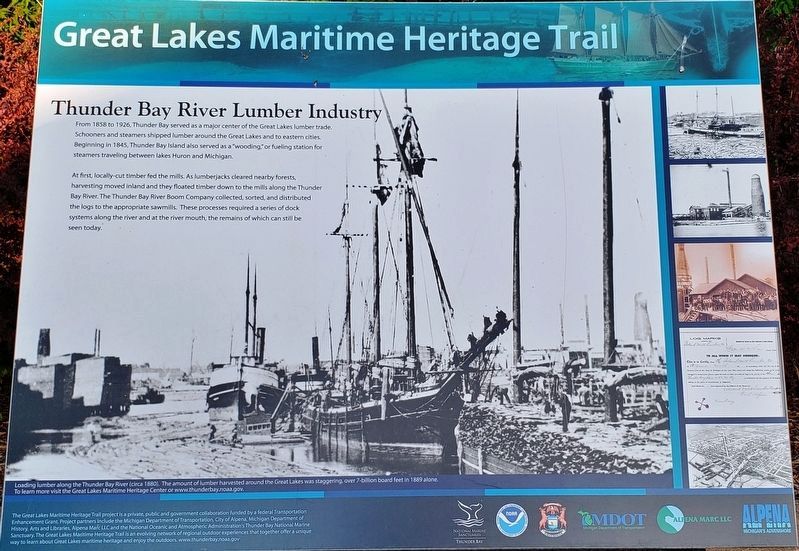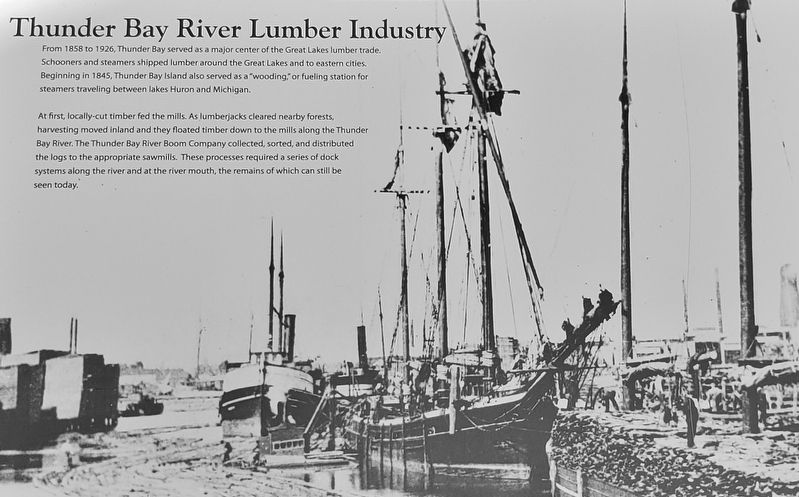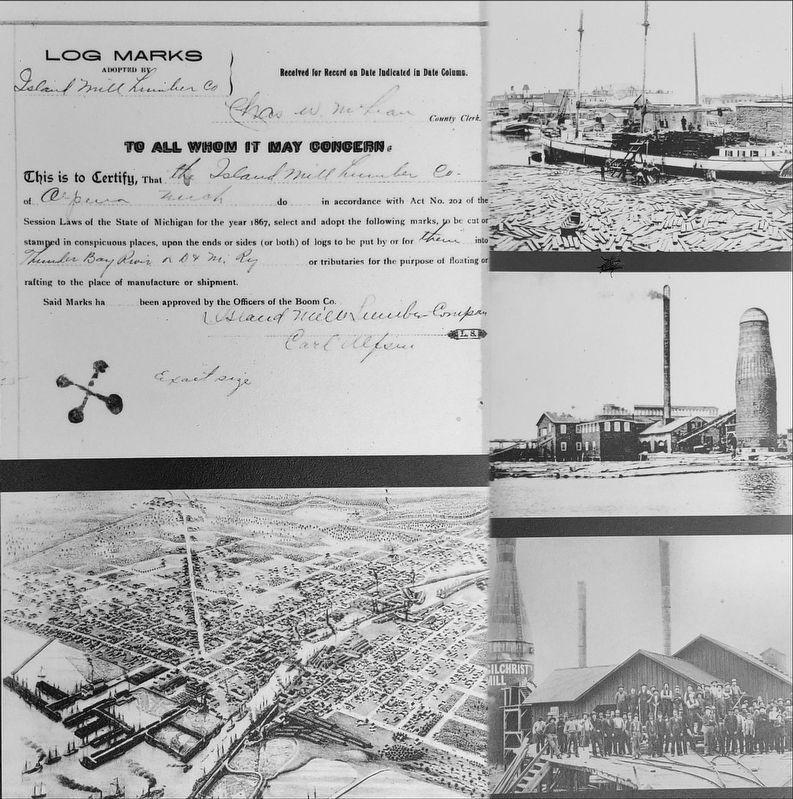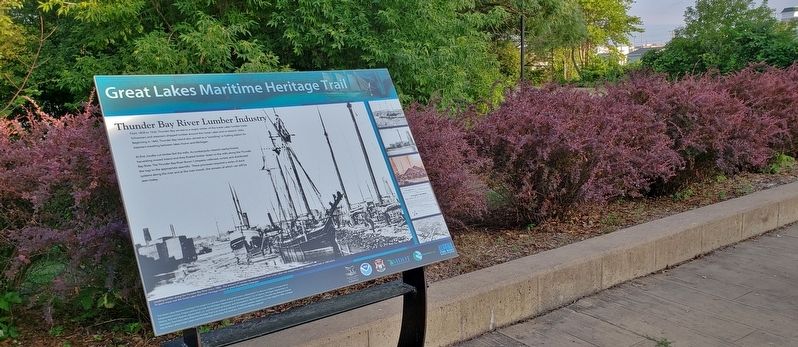Alpena in Alpena County, Michigan — The American Midwest (Great Lakes)
Thunder Bay River Lumber Industry
At first, locally-cut timber fed the mills. As lumberjacks cleared nearby forests, harvesting moved inland and they floated timber down to the mills along the Thunder Bay River. The Thunder Bay River Boom Company collected, sorted, and distributed the logs to the appropriate sawmills. These processes required a series of dock systems along the river and at the river mouth, the remains of which can still be seen today.
Erected by Great Lakes Maritime Heritage Trail.
Topics. This historical marker is listed in these topic lists: Industry & Commerce • Waterways & Vessels.
Location. 45° 4.092′ N, 83° 26.227′ W. Marker is in Alpena, Michigan, in Alpena County. Marker can be reached from North 7th Avenue north of River Street when traveling north. Marker is located on the Alpena Bi-Path, north of North 7th Avenue, near the foot bridge leading to Rotary Island Mill Park. Touch for map. Marker is at or near this postal address: 601 River Street, Alpena MI 49707, United States of America. Touch for directions.
Other nearby markers. At least 8 other markers are within walking distance of this marker. Thunder Bay Fishing Industry (about 500 feet away, measured in a direct line); International Shipmaster's Association (about 600 feet away); The Loss of the Pewabic (about 600 feet away); Propellers (about 600 feet away); Rising from the Ashes: The New Orleans (about 700 feet away); Research Vessels (about 700 feet away); Steaming Open the Frontier (about 800 feet away); Alpena County Courthouse (approx. 0.2 miles away). Touch for a list and map of all markers in Alpena.
More about this marker. Marker is a large composite plaque, mounted waist-high on a metal supporting rack.
Also see . . .
1. Thunder Bay River Lumber Industry. In the early decades of the nineteenth century, the Great Lakes and their tributary waterways flowed through areas densely covered with virgin timber. This timber became a primary resource for both regional and national building materials, industry, and fuel. Timber harvesting began along the shores of the southern-most lakes - Ontario, Erie, and Michigan - during the first five decades of the nineteenth century as new cities were built at strategic
locations. Eventually, the demand for lumber exhausted local supplies. By the 1840s, cities like Cleveland, Buffalo, Toronto, Milwaukee, Chicago, and Detroit were importing wood products both for local use and for transshipment to the east and west. This process was accelerated by the great Chicago fire of 1871 and the resulting need to rebuild one of America's leading cities. (Submitted on August 19, 2018, by Cosmos Mariner of Cape Canaveral, Florida.)
2. Images of Northern Michigan's First Lumbering Operations. E. K. Potter, one of the first lumbermen in the great Alpena pineries writes: "In the fall of 1858 Lockwood & Minor inaugurated the first lumber operations on the Thunder Bay river. One pair of horses did the log hauling for the mill in the summer and the lumber woods was the present site of Alpena. Down timber and burnt timber, and in fact everything that would make a piece 6x6, was hauled to the little mill, and squared, and the block ends cut off, and shipped to Cleveland, and pork, tea, sugar, etc., brought back in return..." (Submitted on August 19, 2018, by Cosmos Mariner of Cape Canaveral, Florida.)
Credits. This page was last revised on August 21, 2018. It was originally submitted on August 16, 2018, by Cosmos Mariner of Cape Canaveral, Florida. This page has been viewed 408 times since then and 40 times this year. Photos: 1, 2, 3, 4. submitted on August 19, 2018, by Cosmos Mariner of Cape Canaveral, Florida. • Bill Pfingsten was the editor who published this page.



